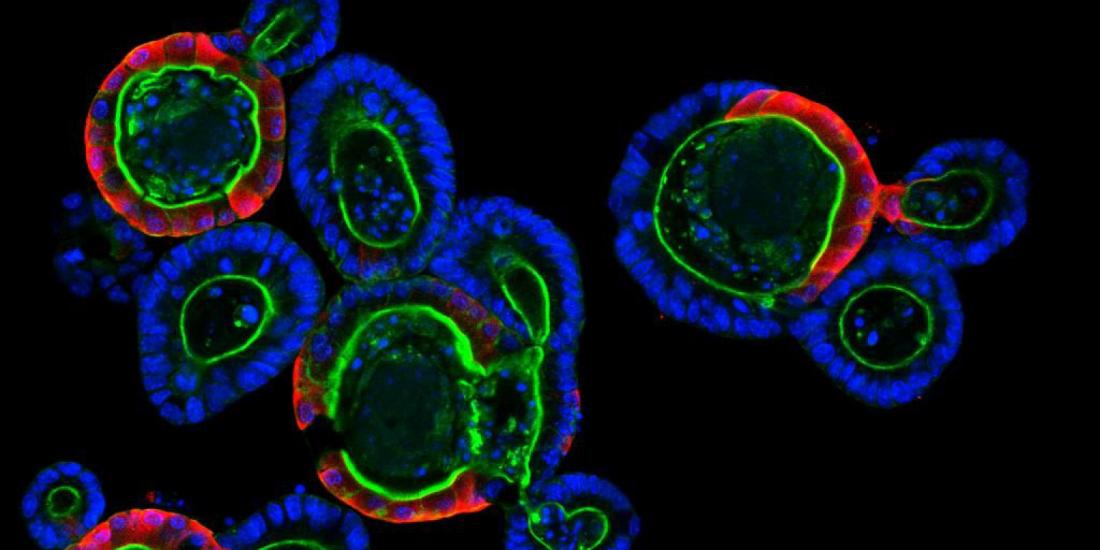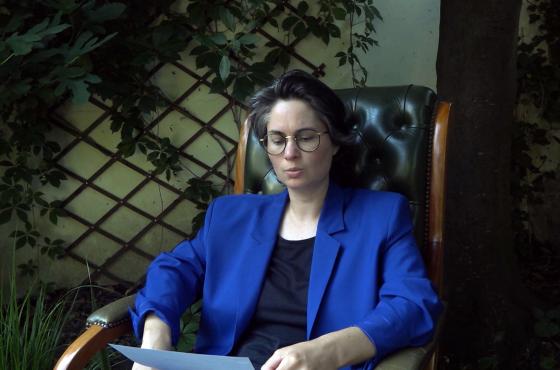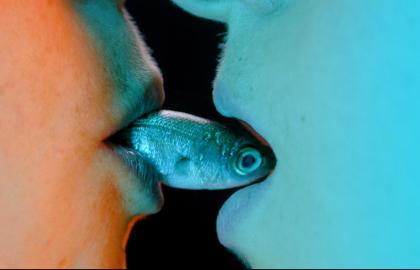It seems quite a challenge to bring together an artist and a scientist specialised in medical research around the subject of cancer treatment. Coming from two very different approaches, how to find common ground on such a serious subject? It is not easy, to say the least. The participants need to demonstrate a very sharp expertise in their respective domains, but also have to be particularly open-minded in order to see things from their partner’s point of view and to accept the valuable additional insight they may contribute to the project.
Sandra Lorenzi and Jean-Christophe Marine have the intelligence and humility to achieve this subtle balance, and to commit to this artistic-scientific adventure. The project was born thanks to Studiotopia: art meets science in the Anthropocene. The European residency programme, of which BOZAR is one of the founding members, aims to offer a new generation of artists the opportunity to collaborate with scientists, and to present the results of their joint research to the public through events or exhibitions (see box below).
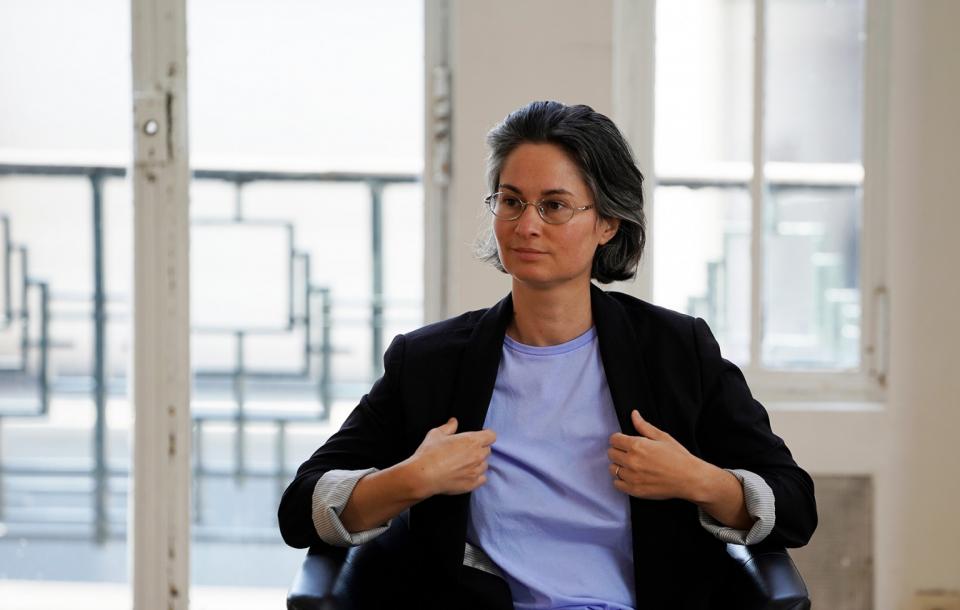
“Cancer concerns every one of us. We all have friends or relatives who have unfortunately been affected. Cancer touches on the age-old theme: the struggle between life and death. It is a fundamental question that art does not often approach from a medical perspective.”
The story of a meeting
One might think, at first glance, that nothing in their backgrounds would suggest a straightforward bond. An artist and a poet, Sandra Lorenzi had never before collaborated with a specialist in life sciences:
“For me, it’s really a first. I’m part of the Space Brain Laboratory of the Institut d’Art Contemporain in Villeurbanne. Researchers from all fields are invited there. But since I have a background in the humanities, I work more with philosophers or anthropologists. I’m not an artist that you’ll find on platforms which focus on links between art and science. I do more literary work that deals with imaginary and energy, and which uses a lot of drawing or sculpture.”
However, the treatment of cancer echoes a theme that runs through all of her artistic work: “I was immediately interested in working with Chris, because the idea of care and providing care, which is central to my research, resonated with the issue of cancer.”
“It's a first for me too,” says Jean-Christophe Marine. “Of course, I’m interested in art, but I had never tried to link my work with an artistic activity. I have been a researcher in cancer biology for some fifteen years, and I head the VIB cancer research laboratory in Leuven. We work on the biology of melanomas, a cancer that affects pigmented skin cells, and that creates very aggressive and invasive tumours.
In the scientific world, we spend an enormous amount of time on research, we meet other researchers, my wife is a researcher... We don’t have many opportunities to meet people who have different ways of thinking. This is why we have initiated collaborations with artists (see box below) as part of a joint programme with BOZAR and GLUON. It is therefore with great interest that I set out on this project with Sandra.”
The meeting between the scientist and the artist does not, however, take place in a strictly medical realm. “The first insights that would lead to the main pillars of the residency emerged from the initial discussions I had with Jean-Christophe Marine, whom I met at a conference organised by BOZAR as part of the Studiotopia programme last September,” explains Sandra Lorenzi.
“I was particularly struck by the way he described the behaviour of tumour cells: unlike healthy cells, he said cancerous cells functioned in an ‘aberrant’ fashion. As a poet, I found the use of the term ‘aberration’ interesting because etymologically, it means ‘to stray from a path’. For me, it was a profoundly human interpretation. Of course, the scientific mind must be as objective as possible. But for me there was a human and cultural expression of a subjective view of reality, just like people tend to express subjectivity in the world.
That was the real starting point for our work: how does this aberration of cancer cells express itself, and how do we approach that expression? I come from a background that draws on energetic healing practices, from homeopathy to acupuncture and lithotherapy.
Science today is also interested in bringing together all the bodies that make up the human body: the physical body, of course, but also the subtle bodies (emotional, mental). We can suppose that the onset of cancer coincides with a moment when the body can no longer defend itself, like something that cut through all the bodies to affect the physical body itself. It is this cellular expression that interests me in particular.”
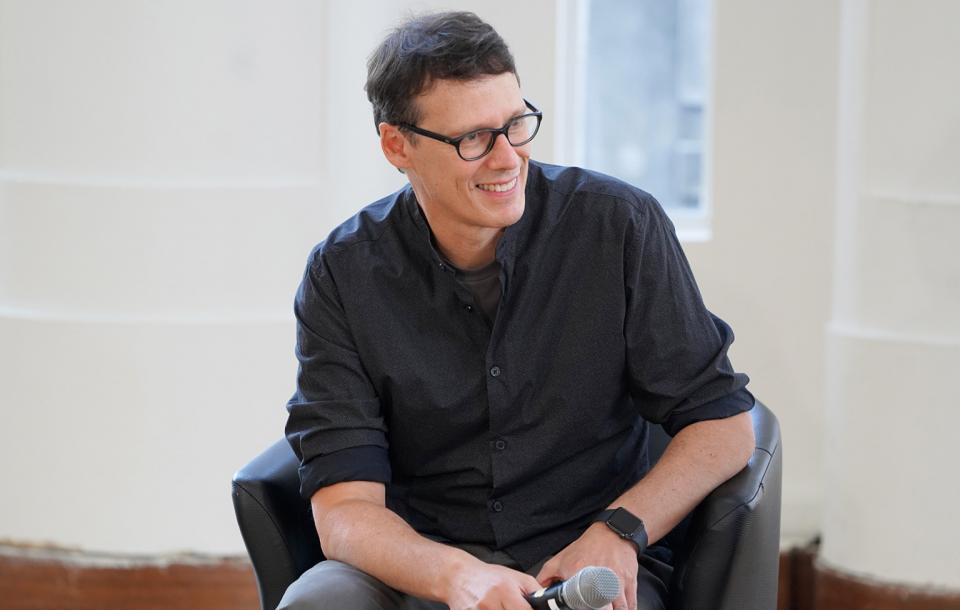
“We have heard a lot of talk about pathogenic diseases during the COVID pandemic, in which viruses can kill the host. But cancer is very different: it is about normal body cells that, at a given time, begin an aberrant trajectory that aims to kill that body.”
In vitro culture of cancer cells
Their project therefore sets out as an extension of Jean-Christophe Marine’s research: “We study how and why cancer cells are formed, and, at a given time, invade other tissues, causing metastases, that is, other lesions that develop in vital organs and end up killing patients.
We’re also trying to develop therapies that are best adapted to each individual patient. Until recently, we used to treat cancer with very standardised therapies, but we realised that tumours are very complex, varying from one patient to another, and therefore require personalised treatment. To do this, we take small samples of tumours and develop them in organoid cultures that keep them alive, allowing us to test a series of drug combinations and identify the best treatment for each patient.
And that’s where Sandra's work interested me. Our expertise is at the molecular and cellular level. Ultimately, we are not interested in the person with cancer, with whom we have no contact, since the sample we are studying has been taken by a doctor. This lack of contact with patients is one of the aspects that’s missing from our research. Now, through her project, Sandra is suggesting that we engage in a more holistic reflection that involves patients.”
The organoids, on which the collected cancer cells continue to develop, are therefore a true clone of the tumour in a patient’s body. As such, they offer an unprecedented support to Sandra Lorenzi’s artistic interrogation:
“Our project idea is quite simple: to give patients the possibility of coming into visual contact with their own cells on the organoid. It’s a different way of making patients aware of their disease, not only in their body, but also outside of it. By externalising its expression, we hope to bring patients some relief, by confronting them with the disease.”
“To my knowledge, the experiment has never been done before,” says Jean-Christophe Marine, adding: “Here, our objectives are the same. We know very well that patients want to be more involved in their treatment, and to be better informed about our research and the pharmaceutical solutions we provide. This gives us the opportunity to show what we do with the sample collected, and to explain our approach.”
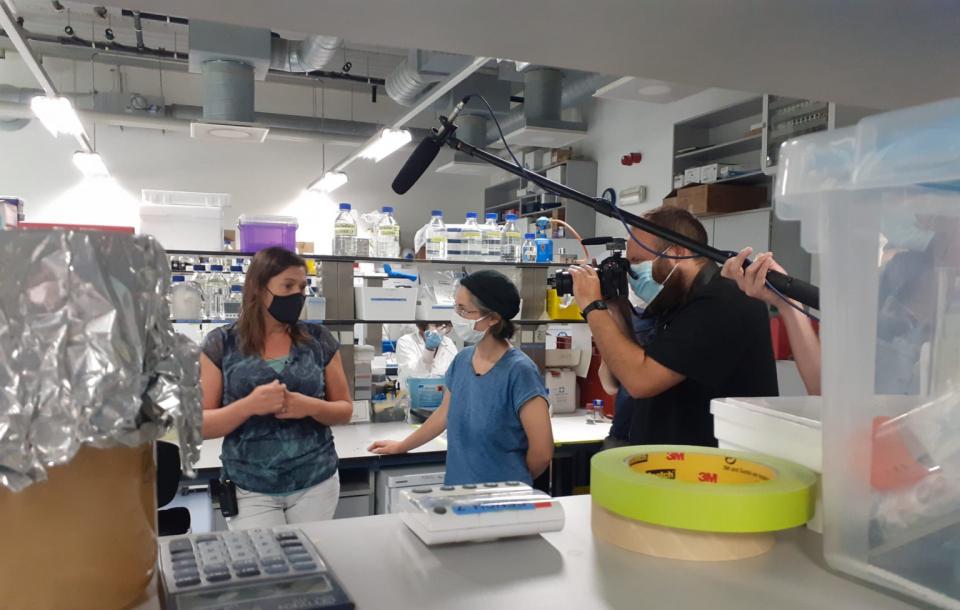
Establishing a delicate protocol
Placing patients in front of a physical externalisation of the disease inside them is part of a tradition deeply rooted in our culture, going back to the origins of the aesthetics of ancient Greece. Confronting the emotions that we carry within us and that we can understand through a double – like the character in a tragedy, for example – is a cathartic release that provides a kind of soul cleansing, an emotional liberation.
But despite the expected benefit for patients, the protocol for a project of this kind raises a number of ethical issues. As Sandra Lorenzi explains: “Confronting patients with the expression of their illness is a very delicate task. It could weaken them or trigger psychological processes that are beyond our control. The protocol needs psychological support that neither Chris nor I can provide.”
The researcher is equally cautious: “We need to submit a request to the ethics committee, and this needs to be done by the project promoter. It can’t be done by the doctor because our project has no medical purpose as such. Moreover, the personal information we collect is totally anonymous: patients are identified by codes that are unknown to us. As the researchers cannot be in direct contact with patients, the contact needs to be established by an intermediary person, such as patients’ doctors.”
These legitimate concerns, which guide the project in carefully drawing up the necessary protocol, nevertheless offer some possible solutions: “The most realistic option would be for patients in remission to be confronted with their organoid. These patients are less emotionally fragile. Giving them the opportunity to visualise the illness they have gone through would make them aware of everything that has been done.
This is also of scientific interest, because we do not always understand why a combination of certain drugs rather than others helped patients to go into remission. Therefore, even if the tumour has disappeared, it makes sense to keep the organoid to try to study its cause, and later propose more effective treatments to other patients,” the researcher adds.
Presenting the final results of the residency at BOZAR
As you may have realised, the final form of the project has not yet been completely decided. But one thing is certain: the result will be quite different from the artistic productions that Sandra Lorenzi has created until now:
“The idea is not to create a work of art, but to document this experience and this encounter. We could therefore film the meeting between patients and their organoid, focus on the patients’ hands, eyes and the way in which they experience the event.”
The artist herself experienced a tangible emotion when she first discovered the scientist’s laboratory and observed the organoids that he was studying: “Chris showed me the cancer cells under the microscope. Such an experience may seem trivial, but it was totally disconcerting.
It moved me deeply and brought forth many questions. You find yourself face to face with a presence, but it’s not a body. It’s as if you could identify the enemy which you are finally confronted with. Such an enemy isn’t anyone’s in particular since it’s detached from a body, but it’s there. And at the same time, the enemy is not harmful, because it’s serving science.”
This ambivalence is a source of artistic creation: “I wonder what culture will be generated by this display of cancer cells. I’m interested in transforming the experience of our contemporary existence with new mythologies, in order to extract ourselves from the Christian heritage that radically separates the body from the spirit.
It seems to me that we are now moving away from this dualist conception. I am looking to reshape people’s imagination into something less binary, not as black and white, which allows us to better grapple with the questions of our time. This type of approach offers a common thread between artists and scientists, casting our focus wherever something resists or raises questions. Our methodologies and our objectives are different, but this is where it becomes interesting, because I need Chris’s methodology to define the protocol.”
Jean-Christophe Marine is equally focused on the need for complementarity identified by his partner: “Researchers and artists are both very curious and want to understand. It’s fascinating to observe how, starting from the same subject, we follow such different paths.”
This complementarity is precisely what makes their project so fascinating. You can learn about it at the Studiotopia exhibition at BOZAR in 2022, and follow it online at studotopia.eu.
Find out more about …
Studiotopia
Supported by the Creative Europe Programme, the STUDIOTOPIA initiative aims to increase collaborations between cultural and research institutions, academia, innovation centres, artists and citizens. The initiative brings together eight European cultural institutions: the Centre for Fine Arts (BOZAR) and GLUON, Ars Electronica in Linz, the Cluj Cultural Centre, the Laznia Centre for Contemporary Art in Gdansk, Onassis Stegi in Athens, Vrije Universiteit Amsterdam and Laboral in Gijon. As part of the initiative (2019-2022), STUDIOTOPIA will organise a vast programme of activities across the partnering institutions: residencies, exhibitions, pop-up labs, workshops and talks. During a 17‑month residency, 13 teams from across Europe, including 25 scientists and 13 artists or artists’ collectives, will be working together on projects that bring art and science closer together. The results of these collaborations will be exhibited and presented to the public in different partner institutions at the end of residencies.
More information on https://bitly.com/studiotopia
And the VIB Grand Challenges Programme
The VIB (Vlaams Instituut voor Biotechnologie) is the scientific partner of this art and science residency. The residency is part of the VIB Grand Challenges Programme, which aims to increase the societal impact of VIB, by supporting transversal and disruptive research programmes in fields as varied as innovative treatments, epidemic control, sustainable agriculture or targeted treatments. Researchers hope that their will help patients and society as a whole. As Professor Sofie Bekaert, coordinator of the Grand Challenges Programme, points out: “The artist-in-residency programme is a dive into the unknown, an ultimate form of interdisciplinarity through languages, materials, aesthetics and ethics of two very different but incredibly creative disciplines. We believe that this interaction will give rise to a higher level of creativity and generate visibility and dialogue with stakeholders and the general public.”
More information on https://vib.be/grand-challenges-program
